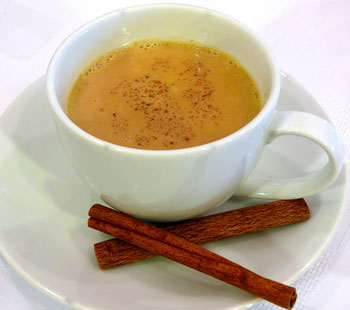 If you’re like me, the grenadine you grew up adding to cocktails and Shirley Temples is nothing like the real deal. Thinking I was resigned to the artificially colored and flavored brand-that-shall-remain-nameless, I usually skipped over any type of drink that called for grenadine, opting for drinks that weren’t as sweet and syrupy.
If you’re like me, the grenadine you grew up adding to cocktails and Shirley Temples is nothing like the real deal. Thinking I was resigned to the artificially colored and flavored brand-that-shall-remain-nameless, I usually skipped over any type of drink that called for grenadine, opting for drinks that weren’t as sweet and syrupy.
This all changed when I actually discovered what grenadine was and how truly simple it is to make.
I could fill up an entire blog about the historial importance of pomegranates, but I wouldn’t know where to start. Suffice it to say that one of the oldest fruits on earth make the absolute best syrup–a taste that lives between tart and sweet, not unlike citrus.
And the recipe? Extract the juice of a pomegranate, add sugar and reduce over heat. That’s it.
(Well, it sounds easy, but wait till you have a case of pomegranates and you’re up to your eyeballs in exploding arils and your forearms are stained hot pink. It takes effort. Now it makes sense why the French and Spanish called it “grenadier” and “Grenada”, and where the world “grenade” came from.)
You can find the juice already bottled, but I swear it just doesn’t taste the same as freshly squeezed/abused/fought-over/pressed/stepped on pomegranate juice. Sure, you’ll save yourself some headache, but you’ll deny yourself pretty pink fingers.
 Basic Grenadine Recipe
Basic Grenadine Recipe
Because I like the tartness of pomegranates I usually go easy on the sugar, or I omit the sugar completely when making a reduction. This allows me to use my syrup not only in cocktails but as a dressing or marinade for savory recipes. It can also be made with honey.
2 cups pomegranate juice*
1 cup sugar (or less if you prefer it not so sweet)
Bring juice to a simmer over medium heat and cook until reduced by half. Reduce heat and add sugar, stirring constantly until it dissolves, about 2 or 3 minutes. Allow liquid to cool completely and then refrigerate. It should last about 1 week.
* This cocktail can be made with freshly squeezed juice from a large pomegranate or by using 100% Pomegranate Juice. To juice the pomegranate, cut it in half (as you would a grapefruit) and juice using a citrus reamer or a juicer. Pour the mixture through a cheesecloth-lined strainer or sieve. One large POM Wonderful Pomegranate will produce about 1/2 cup of juice.
-- Also published on MattBites.com

 The more wines you try, the more you'll develop your palate-it's that simple. And how you try them makes all the difference. I know when you see wine tasters doing a lot of curious slurping it seems like a highly mysterious activity...but it's not. Swirl, sniff and spit, that's all it is. So why do we swirl? What are we looking for exactly? What is acidity? Tannin?
The more wines you try, the more you'll develop your palate-it's that simple. And how you try them makes all the difference. I know when you see wine tasters doing a lot of curious slurping it seems like a highly mysterious activity...but it's not. Swirl, sniff and spit, that's all it is. So why do we swirl? What are we looking for exactly? What is acidity? Tannin? Which foods pair best with rosés? The question is almost beside the point. Rosés are made for warm summer evenings, dinners outdoors with friends and laughter. Serve dishes that fit with that kind of setting and you're on the right road.
Which foods pair best with rosés? The question is almost beside the point. Rosés are made for warm summer evenings, dinners outdoors with friends and laughter. Serve dishes that fit with that kind of setting and you're on the right road. You have about a month to make these before Clementine season is officially over. Don't miss it.
You have about a month to make these before Clementine season is officially over. Don't miss it.  I don't know about you but when Christmas is in the air, it's time for my favorite, favorite drink.....
I don't know about you but when Christmas is in the air, it's time for my favorite, favorite drink.....